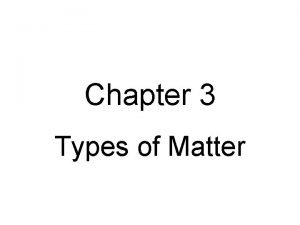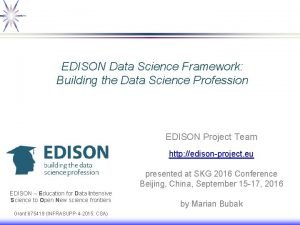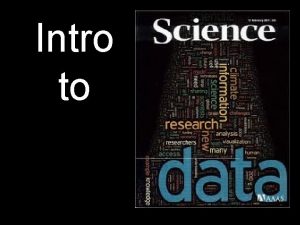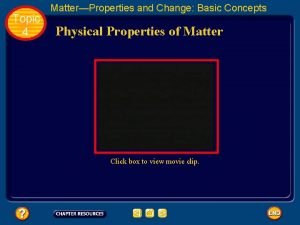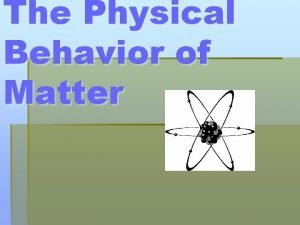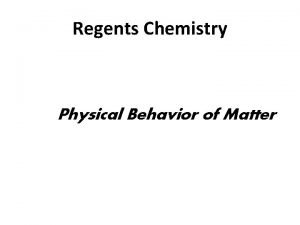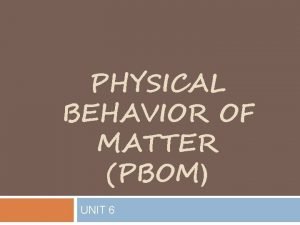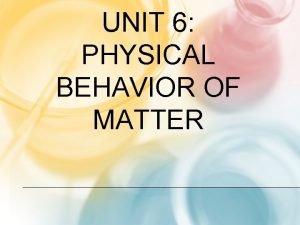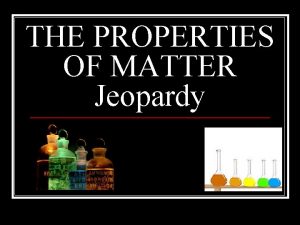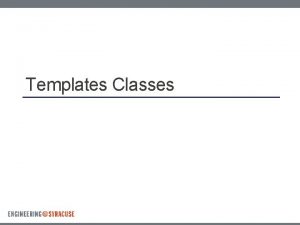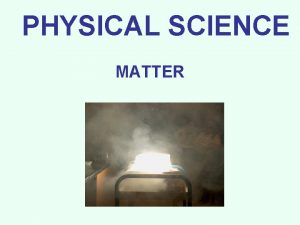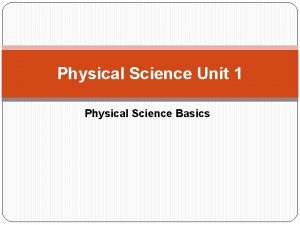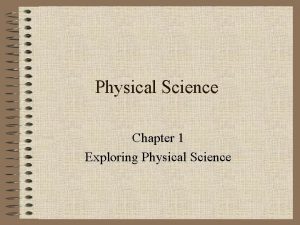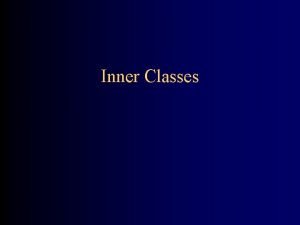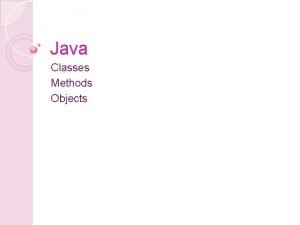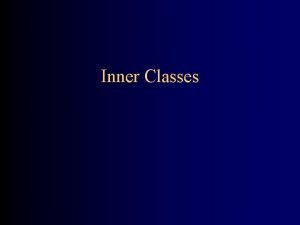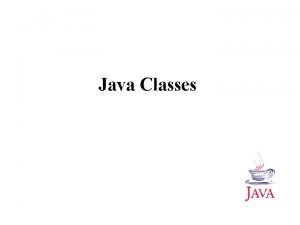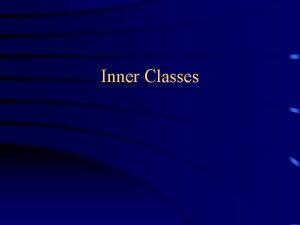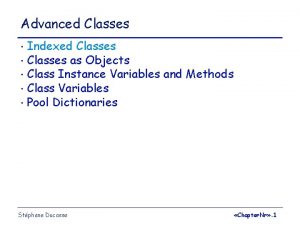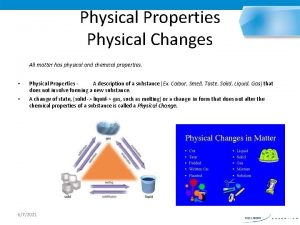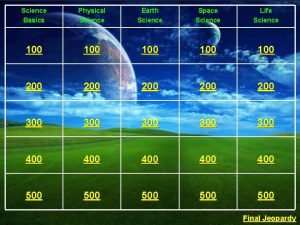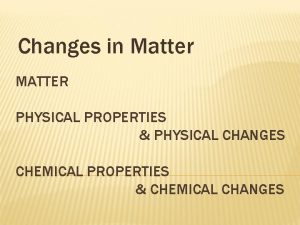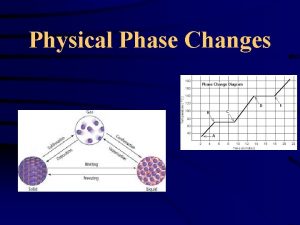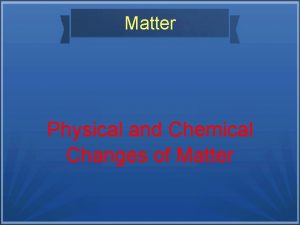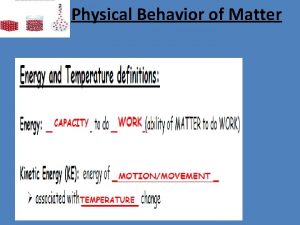PHYSICAL SCIENCE MATTER CLASSES OF MATTER Matter is



















- Slides: 19

PHYSICAL SCIENCE MATTER

CLASSES OF MATTER • Matter is anything that has mass and volume. • Substance – element or compound that cannot be broken down into simpler components and maintain the properties of the original substance.

MATTER Homogeneous Pure Substances Elements Compounds Solutions Heterogeneous Mixtures

CLASSES OF MATTER HOMOGENEOUS MATTER - All parts of the substance are identical. MATTER Homogeneous Pure Substances Elements Compounds Solutions Heterogeneous Mixtures

MATTER Homogeneous Pure Substances Elements Compounds Solutions Heterogeneous Mixtures

ELEMENT • the simplest pure substance. • cannot be changed into anything simpler through heat or a chemical reaction. • consist of all the same atoms (the building blocks of matter). • all parts are identical. • Examples: iron (Fe), copper (Cu), mercury (Hg)

MATTER Homogeneous Pure Substances Elements Compounds Solutions Heterogeneous Mixtures

COMPOUND • made up of more than one element; any combination of two or more different kinds of elements. • substance formed from two or more elements in which the exact combination and proportion of elements is always the same. • The elements are chemically combined. Copper (II) Chloride

COMPOUND • Can be broken down by heat or chemical reaction. • The properties of compounds are different from those of the elements that make them up. • All parts are identical. • There a fixed number of components in compounds. • Examples: water, salt, sugar, and DNA.

MATTER Homogeneous Pure Substances Elements Solutions Compounds Heterogeneous Mixtures

SOLUTIONS • two or more substances mixed together that appear to have the same composition, color, density, and taste throughout. • is physically combined, but not chemically combined. • Each substance in a solution keeps its own separate identity and most of its own properties. • All parts are identical. • Examples: sea water, air, coffee, brass

MATTER Homogeneous Pure Substances Elements Solutions Compounds Heterogeneous Mixtures

CLASSES OF MATTER Heterogeneous Matter • All parts of the substance are NOT identical.

MATTER Homogeneous Pure Substances Elements Solutions Compounds Heterogeneous Mixtures

MIXTURES • two or more substances mixed together. • is physically combined, but not chemically combined. • Each substance in a mixture keeps its own separate identity and most of its own properties. • All parts are NOT identical. • Can be separated by filtration. • Examples: soil, raisin bran cereal, pizza

SOLUTIONS AND MIXTURES There are three important properties of mixtures and solutions: 1. May change physical appearance 2. The parts that make it up can be present in any amount - the parts are not in fixed amounts. 3. Can be separated by simple physical means using methods based on physical properties.

SEPARATION TECHNIQUES • Filtration - Using a porous barrier to separate a solid from a liquid in a heterogeneous mixture. • Distillation - process that can separate two substances in a mixture by evaporating the liquid and recondensing its vapor. Based on boiling points of the substances involved. Separates homogeneous mixtures/solutions.

SOLUTIONS AND MIXTURES Filtration Distillation

CONSERVATION OF MASS • Matter cannot be created or destroyed. • It can be converted into energy (not by you and I) through nuclear reactions, but not in chemical reactions. • As a result, massreactants should ALWAYS equal the massproducts. That is why we can balance equations.
 Já classe e subclasse
Já classe e subclasse Pre ap classes vs regular classes
Pre ap classes vs regular classes Main branches of natural science
Main branches of natural science Natural and physical science
Natural and physical science What was your favorite subject as a child
What was your favorite subject as a child 3 classes of matter
3 classes of matter People matter survey
People matter survey Data science courses edison
Data science courses edison The pricing tripod
The pricing tripod Physical fitness grade 9
Physical fitness grade 9 Physical properties
Physical properties Physical state of matter
Physical state of matter Topic 4 physical behavior of matter
Topic 4 physical behavior of matter Physical behavior of matter
Physical behavior of matter Physical behavior of matter
Physical behavior of matter Unit 6 physical behavior of matter
Unit 6 physical behavior of matter Physical behavior of matter heating and cooling curves
Physical behavior of matter heating and cooling curves Physical properties of matter jeopardy
Physical properties of matter jeopardy True or false: chemical and physical changes alter matter.
True or false: chemical and physical changes alter matter. Graphic organizer matter classifications
Graphic organizer matter classifications





